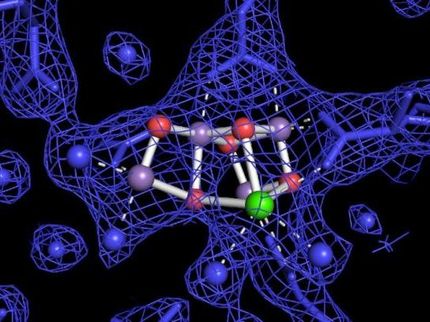Bonn scientists discover new hemoglobin type
Instruments falsely report anoxia in affected people
Scientists at the University of Bonn have discovered a new rare type of haemo-globin. Haemoglobin transports oxygen in the red blood corpuscles. When bound to oxygen it changes colour. The new haemoglobin type appears optically to be transporting little oxygen. Measurements of the blood oxygen level therefore present a similar picture to patients suffering from an inherited cardiac defect. After examining two patients, the scientists now understand that the new type of haemoglobin distorts the level of oxygen measured. The scientists have named the type 'Haemoglobin Bonn'. They have published their discovery in 'Clinical Chemistry'.
Haemoglobin transports oxygen to the body's cells and in return picks up carbon dioxide there. In doing so it changes colour. With an optical measuring instrument, known as a pulse oximeter, you can therefore measure whether there is enough oxygen present in the blood. The cause of anoxia can be an inherited cardiac defect, for example.
This was also the tentative diagnosis in the case of a four-year-old boy who was admitted to the Paediatric Clinic of the Bonn University Clinic. However, after a thorough examination, the paediatricians Dr. Andreas Hornung and his colleagues did not find any cardiac defect. A low saturation of oxygen had also been previously found in the blood of the boy's 41-year-old father, again without apparent signs of a cardiac defect.
Dr. Berndt Zur from Professor Birgit Stoffel-Wagner's team at the Institute of Clinical Chemistry and Pharmacology examined the boy's and the father's haemoglobin. He eventually realised that they were dealing with a new type of the blood pigment. 'The pulse oximeter is put on a finger as a clip and X-rays it with infrared radiation,' he explains. 'Haemoglobin absorbs infrared light in the absence of oxygen. The lower the content of oxygen in the blood, the less light penetrates the finger and reaches the sensor of the oximeter.' But Haemoglobin Bonn absorbs a bit more infrared light than normal oxygen saturated haemoglobin, even when combined with oxygen. 'That's why, at first, we did not understand why the patients did not have any particular health problems,' Dr. Zur says.
Every human has two main heart ventricles. One pumps the blood through the arteries to the lungs, where the haemoglobin releases the carbon dioxide and takes on oxygen. The other one pumps the blood which is saturated with oxygen from the lungs to every cell in the body. Both ventricles must be separated by a wall in the heart, so that the oxygen-rich blood does not mix with the anoxaemic blood. But some people have a hole in this septum. In such cases, the pulse oximeter shows anoxia. Doctors therefore see this as a sign of a cardiac defect. Another cause is what is known as the Apnoea Syndrome. In the patients affected, breathing can cease for more than a minute. That is why the father of the 4-year-old received oxygen treatment at nights for some time. 'If we had known about Haemoglobin Bonn before, father and son could have been spared the fear of a cardiac defect or the Sleep Apnoea Syndrome,' Dr. Zur explains.
Organizations
Other news from the department science

Get the life science industry in your inbox
By submitting this form you agree that LUMITOS AG will send you the newsletter(s) selected above by email. Your data will not be passed on to third parties. Your data will be stored and processed in accordance with our data protection regulations. LUMITOS may contact you by email for the purpose of advertising or market and opinion surveys. You can revoke your consent at any time without giving reasons to LUMITOS AG, Ernst-Augustin-Str. 2, 12489 Berlin, Germany or by e-mail at revoke@lumitos.com with effect for the future. In addition, each email contains a link to unsubscribe from the corresponding newsletter.



















































